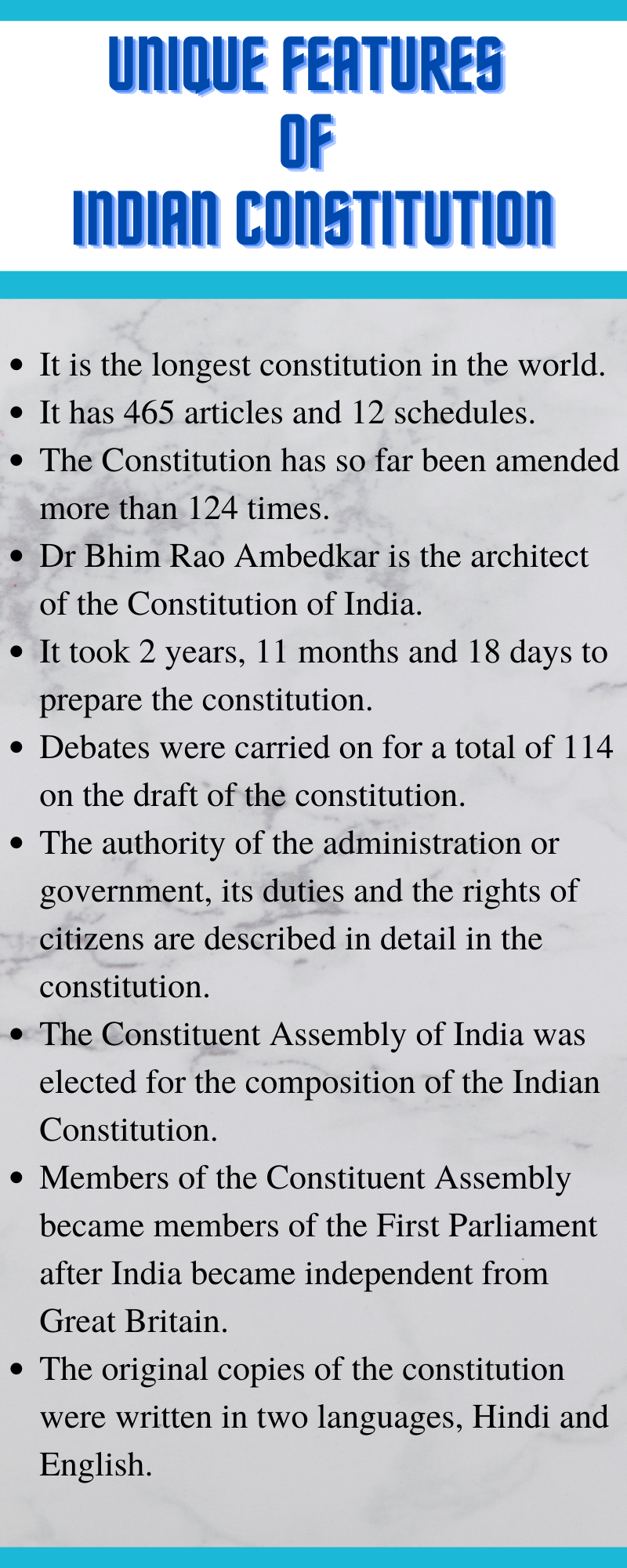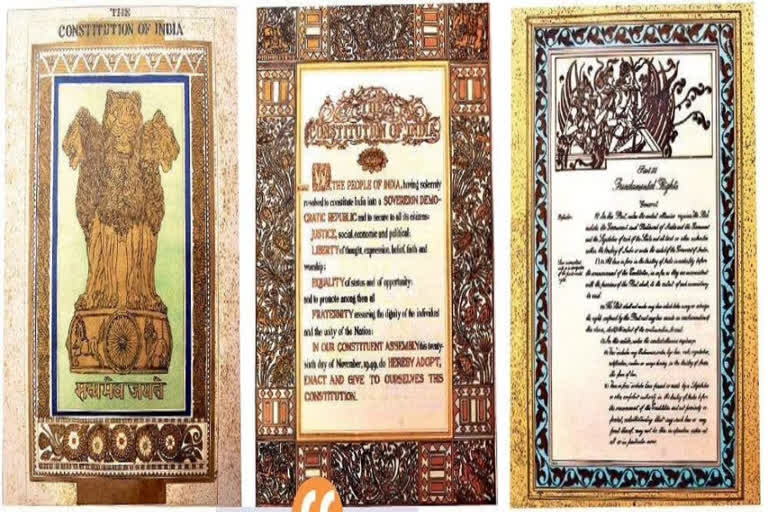Dehradun: The founding document of India--the Constitution of India, turns 70 on this Republic Day. The handwritten copy of the constitution of India has been preserved in the Survey of India in Dehradun, while the original copy of the handwritten constitution has been kept in the National Museum of New Delhi.
The Dehradun-based Survey of India which printed 1,000 initial photolithographic reproductions of the handcrafted Constitution has preserved one of those copies.
The Constitution of India has emerged out of the tide of time, struggle and motility. After implementing the world's largest written constitution, the biggest task was to print copies of the constitution, the task of which was entrusted to the Survey of India, which completed it in about 5 years, one copy of the batch of one thousand historical copies of the Constitution that was printed has been placed in the library of the Parliament, and another copy is still preserved in Dehradun.

The committee that drafted the Constitution of India wrote it by hand in Hindi and English which was later telegraphed. It did not include any typing and printing. The original copy of the Constitution of India was written by hand in the Survey of India in Dehradun itself. Prem Bihari Narayan, the resident of Delhi, wrote the constitution in italic style. Along with this, every page was decorated and decorated by artists of Shanti Niketan, after which every page of the Constitution was telegraphed and published through photolithographic technique in the Survey of India itself.
The complete saga of writing the Constitution Of India
We all know that we got independence on 15 August 1947, but we had no constitution to run the country. The Constitution was adopted by the Constituent Assembly of India on 26 November 1949 to form an independent republic and to make laws, and it was implemented on 26 January 1950.
The Constituent Assembly was established in the year 1946 to make the Constitution, which had 389 members. The first meeting of that assembly was held on 9 December 1946. In which the senior-most MP, Dr. Sachchidanand Sinha was elected as the Provisional President. After this, on 11 December 1946, Dr. Rajendra Prasad was elected the Permanent Chairman of the Constituent Assembly. After the partition of the country in the year 1947, the number of members in the Constituent Assembly was reduced to 299.
The structure of the constitution was adopted on 26 November 1949 after 2 years 11 months and 18 days of the establishment of the Constituent Assembly. After which the handwritten constitution was signed by 284 Members of Parliament of the Constituent Assembly on 24 January 1950.
On 26 January 1950, the Constitution of India was implemented. The constitution has 465 Articles and 12 Schedules divided into 22 parts, which has been amended more than 100 times so far.
After independence, the Drafting Committee under the chairmanship of Dr Bhimrao Ambedkar drafted it to prepare a written truss of the country's constitution. The world's largest written constitution was also accepted by the Constituent Assembly on 26 November 1949. There was also a challenge to publish it after that, as the Drafting Committee and especially the Indian leadership wanted to publish it with the same handmade decoration to preserve the originality, form and memory of this sacred book of Indian democracy.
State-of-the-art printing facilities were not available at that time and the largest and well-equipped print house was available only at the Survey of India at Dehradun, so the Constituent Assembly gave the responsibility of printing a copy of this historic constitution to the Survey of India, where the first one thousand copies of the Constitution were printed. The same first copy of the Constitution of India is still present in the Survey of India. It was published with the photolithographic technique.
The constitution was written in italic style
Prem Bihari Narayan Raizada, a resident of Delhi, wrote it beautifully in italic style, while the artists of Shanti Niketan decorated each page of this document very efficiently. Nandlal Raizada has depicted the prehistoric Mohenjodaro to the civilizations and cultures of Indus Valley belonging to the Indian subcontinent on various pages of the Constitution. Raizada has used his holder and nib of 303 number for calligraphy. Goldy leaf and stone colour have been used in calligraphy.
The manuscript was written on a parchment sheet of size 45.7 cm × 58.4 cm, with a thousand years of anti-microbe paper. The finished manuscript consisted of 234 pages, weighing 13 kg.
Machines were preserved for 70 years
For 70 years, the Survey of India kept those printing machines which printed the precious letters of the Constitution on the page. Over time, these machines that printed the copies of the constitution have become worn out. Due to which the Survey of India had to remove those machines from there. These machines have been replaced by high-tech new technology machines.
NPG (North Printing Group) and Director of Map, Records and Broadcasting Center, Col Rakesh Singh said, 'We have the first printed copy of our constitution, which we have kept very carefully so that it does not get damaged due to dampness and any other reason'. . Colonel Rakesh Singh also says that he is proud that the first copy of the Constitution of the country was printed in the Survey of India and even today the institute is maintaining it.
As a memento, the first printed copy of the constitution is still kept in the Survey of India. The original hand-written copy is present in the National Museum of Delhi.
As such, the Survey of India has been playing an important role in cartography. Even today, it is using modern technology in the field of cartography, yet the main contribution of this institution is that it printed the first copies of the Constitution, which is historic and invaluable.
Today, after more than 70 years of independence of the country, it has been almost the same time since the Constitution has been implemented, the first copy of the Constitution is still preserved in the form of a document. The copy of the Constitution which was handwritten and later printed is a witness to the steps that were taken towards the progress of the country.



